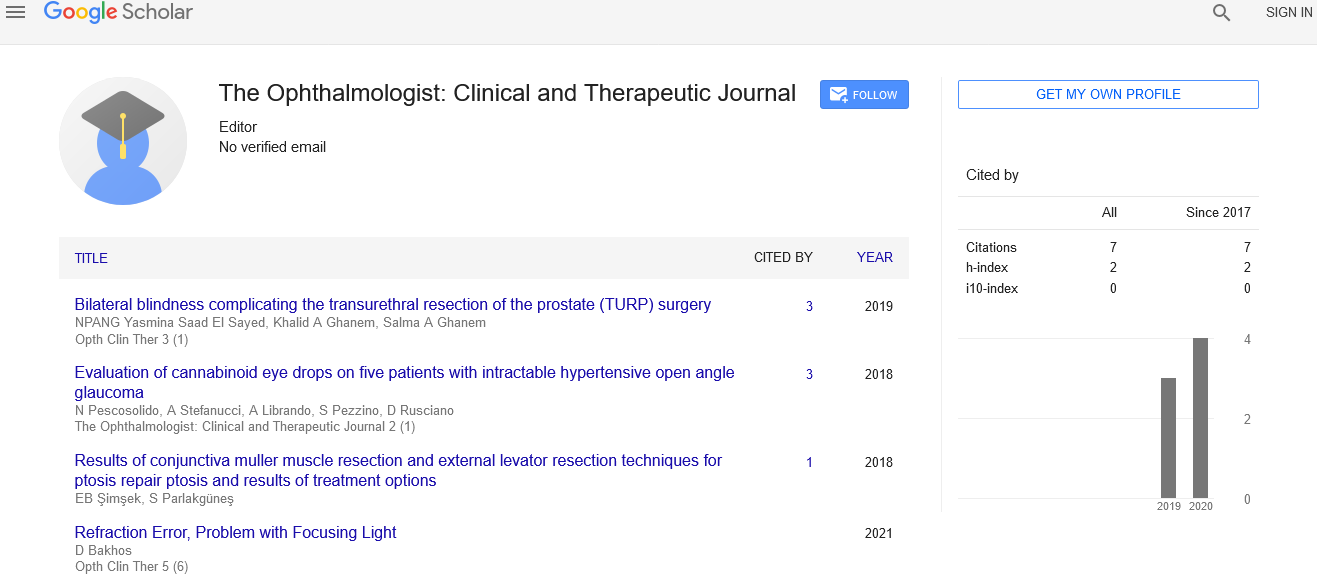Vogt-Koyanagi-Harada (VKH) syndrome: An autoimmune inflammatory disorder
Received: 01-Jun-2021 Accepted Date: Jun 16, 2021; Published: 24-Jun-2021
Citation: Walowitz L. Vogt-Koyanagi-Harada (VKH) syndrome: An autoimmune inflammatory disorder. Opth Clin Ther. 2021;5(3):4.
This open-access article is distributed under the terms of the Creative Commons Attribution Non-Commercial License (CC BY-NC) (http://creativecommons.org/licenses/by-nc/4.0/), which permits reuse, distribution and reproduction of the article, provided that the original work is properly cited and the reuse is restricted to noncommercial purposes. For commercial reuse, contact reprints@pulsus.com
Introduction
VogtKoyanagiHarada (VKH) syndrome is an autoimmune inflammatory disorder involving the ocular, auditory, integumentary and central nervous system. VKH typically presents in women between the ages of 20 to 50 years old and is most common in people of pigmented race, including Indians, Hispanics, Asians, Native Americans and Middle Easterners. It is one of the most common causes of uveitis in China and Latin American and accounts for up to eight percent of all uveitic cases in Japan. Conversely, VKH only accounts for one to four percent of uveitis referrals in the United States.
Although the exact etiology is unknown, research indicates that VKH is a T-cell mediated autoimmune response directed against the tyrosine antigens of melanocytes found in various organs. Viral prodromal symptoms are common among patients with VKH, which has led to some to suggest that viruses, such as the EpsteinBarr virus, trigger the disorder. No known study, however, has been able to isolate a specific virus from the eyes or cerebrospinal fluid of patients with VKH.
VKH has also been linked to HLADR4 and HLADw53, particular the HLADRB1*0405 haplotype which is a common allele in Japanese.3 In a study by Yamaki, T-cell lymphocytes of patients with VKH have been shown to proliferate and stimulate an inflammatory response when in the presence of tyrosinase family proteins, a melanocyte-associated antigen presented to T-cells via major histocompatibility complexes such as HLA-DRB1*0405. The study has also demonstrated that an autoimmune disease clinically and histologically resembling VKH can be induced in pigmented rats that have been injected with these tyrosine family proteins
Diagnosis
The diagnosis of early VKH can be challenging, particularly when serous RDs are absent. Optical Coherence Tomography (OCT), Fluorescein Angiography (FA) and Indocyanine Green Angiography (ICG) can all be useful in its diagnosis. OCT can clearly display areas of subretinal fluid, typically divided into multiple segments, and may show areas of RPE folding. RPE folds are created in the presence of choroidal thickening; an early characteristics of VKH which may be found in up to 2/3 of cases. Early FA may display multiple pinpoint areas of hyperfluorescence at the level of RPE with late multilobular pooling, whereas ICG would display hazy choroidal vessels, a reduced number of large choroidal vessels and dark areas of hypofluorescence.
Treatment
Rate of recovery is dependent on early diagnosis and treatment; urgent referral to retina is warranted. In a study by Fujioka, if systemic corticosteroids were initiated within two weeks of onset of the disease, intraocular inflammation typically resolved within three to six months. If the treatment was delayed however resolution could take up to 45 months. Systemic corticosteroids should be slowly tapered over a period of three to six months to reduce the risk of recurrence. Rubsamen and Gass found disease recurrence in 43% and 52% of patients with VKH within months and 6 months respectively. In most cases, this occurred when steroids were tapered too rapidly. Recurring and chronic VKH often necessitate immunosuppressive agents, such as cyclosporine or azathioprine, as they tend to be resistant to systemic corticosteroids, even at higher doses.
Conclusion
Aggressive therapy, early detection, very slow tapering of oral steroids and use of immunosuppressant’s are the key to maintaining good visual acuity. The prognosis of the disease is dependent on the duration and the number of recurrent episodes of inflammation. A poor final visual acuity is predicted by a greater number of complications, older age at disease onset, a longer median duration of the disease, delayed initiation of treatment, and greater number of recurrent episodes of inflammation. The better visual acuity at presentation, the more likely tmhe final visual acuity is to be improved.





